The Ultimate Guide to Roof Maintenance in Ohio’s Climate
March 3, 2025
Why Roof Maintenance is Crucial in Ohio
Maintaining your roof is crucial, especially in a state like Ohio, where the weather can be unpredictable. From heavy snowfalls to intense summer storms, Ohio's climate poses unique challenges that can affect the longevity and performance of your roofing system. Proper maintenance is essential to extend the life of your roof, prevent costly repairs, and ensure your home's safety and energy efficiency.
In this guide, we'll explore essential maintenance tips tailored for Ohio homeowners, ensuring your roof remains in optimal condition year-round.
Common Weather Challenges for Ohio Roofs
Harsh Winters:
Snow and ice accumulation are common culprits for roof damage. The freeze-thaw cycle, where water repeatedly freezes and thaws, can cause shingles to crack and loosen.
Ice dams can form in gutters, trapping water and leading to leaks that damage your home’s interior.
Excessive snow weight can strain your roof's structure, leading to sagging or even collapse in extreme cases.
Hot and Humid Summers:
Intense summer heat can bake shingles, causing them to dry out and become brittle.
High humidity encourages the growth of algae, moss, and mold, which retain moisture and deteriorate roofing materials.
UV exposure can weaken roofing materials over time, making them prone to cracks and premature aging.
Heavy Rain and Storms:
Spring and fall often bring heavy rainfall and strong storms.
High winds can rip off shingles, exposing the underlayment and leading to leaks.
Hail damage is another concern, as large hailstones can dent or crack shingles.
Poor drainage can cause water pooling, leading to leaks and structural damage.
Seasonal Temperature Swings:
Ohio experiences rapid shifts in temperature, which causes roofing materials to expand and contract.
These repeated stressors can create cracks and weaknesses over time, leading to leaks and other damage.
Essential Roof Maintenance Tips for Ohio Homeowners
Regular Inspections
Conduct at least two inspections per year—one in spring and another in fall.
Check for missing, curled, or damaged shingles.
Look for signs of sagging or water damage inside your attic.
Clean Gutters and Downspouts
Clogged gutters can cause water overflow, leading to roof leaks and foundation damage.
Clean your gutters at least twice a year and after heavy storms.
Check for Damaged or Missing Shingles
Replace any damaged or missing shingles promptly to prevent leaks.
Consider using impact-resistant shingles if you live in an area prone to hailstorms.
Inspect Flashing and Seals
Flashing around chimneys, vents, and skylights is prone to leaks.
Ensure seals are intact and repair any gaps or corrosion.
Trim Overhanging Branches
Tree branches that touch or hang over your roof can scrape against shingles and cause damage.
Trim back branches to prevent falling debris from storms.
Ensure Proper Attic Ventilation
Poor ventilation can lead to heat buildup in the summer and ice dams in the winter.
Install vents and insulation to regulate temperature and moisture levels.
Address Moss and Algae Growth
Use a roof-safe cleaner to remove moss and algae growth.
Consider installing zinc or copper strips along the roof ridge to prevent regrowth.
Check for Animal Activity
Birds, squirrels, and raccoons can damage roofing materials by nesting or burrowing.
Look for signs of animal activity and secure potential entry points.
Common Roofing Questions Answered
How Often Should I Inspect My Roof?
It's recommended to inspect your roof twice a year and after severe weather events to catch potential issues early.
What is the Average Cost of Roof Repairs in Columbus, Ohio?
The cost of roof repairs in Columbus varies depending on the extent of damage and the roofing material. For accurate estimates, contact a reliable roofing contractor.
How Do I Choose the Right Roofer?
Look for licensed and insured roofers with strong local reputations and experience handling Ohio's climate challenges. Reading reviews and asking for references can also help you find the best roofing company for your needs.
What Are the Benefits of Preventative Roof Maintenance?
Regular maintenance can extend your roof’s lifespan, prevent costly repairs, and improve your home’s energy efficiency.
How Can I Improve My Roof’s Energy Efficiency?
Consider installing reflective shingles, improving attic insulation, and ensuring proper ventilation to keep energy costs down.
When to Call a Professional Roofing Contractor
Active Leaks:
If you see water stains inside your home or have active leaks, this is a serious issue requiring immediate attention.
Extensive Shingle Damage:
If you find widespread damage, such as many missing, cracked, or curled shingles, it’s likely beyond a simple repair and might indicate the need for roof replacement.
Sagging Roofline:
A sagging roofline is a sign of structural problems and requires immediate professional assessment.
Damaged Gutters:
While you can clean gutters yourself, damaged or detached gutters might require professional repair or replacement.
Increased Energy Bills:
Unexpectedly high heating or cooling bills can sometimes indicate poor attic ventilation or insulation issues related to roof problems.
If you notice any of these warning signs, it's best to call a professional roofing contractor. Allstate Exteriors Inc. provides reliable roof repair and maintenance services in
Columbus, Ohio.
DIY vs. Professional Roof Maintenance
Pros and Cons of DIY Roof Maintenance
Pros:
Cost-effective, immediate solutions for minor issues.
Cons:
Safety risks, limited expertise, and potential for voiding warranties.
Benefits of Hiring Professional Roofing Services
Expertise and Experience:
Professionals can identify underlying issues that DIY inspections might miss.
Safety and Equipment:
Roofing professionals have the tools and safety gear needed for safe and effective roof maintenance.
Warranty Protection:
Hiring licensed contractors like Allstate Exteriors Inc. ensures warranty compliance and long-term protection.
Seasonal Roof Maintenance Checklist for Ohio Homeowners
Spring
Inspect for winter damage, including ice dams and water stains.
Clean gutters and downspouts to prevent water backup.
Check for loose or missing shingles.
Summer
Inspect attic ventilation to reduce heat buildup.
Trim overhanging branches to prevent damage from summer storms.
Fall
Clear leaves and debris from gutters and roof valleys.
Check flashing and seals around chimneys and vents.
Schedule a professional inspection to prepare for winter.
Winter
Remove snow buildup to prevent ice dams.
Check for leaks after heavy snowfall or ice storms.
Protect Your Investment with Regular Roof Maintenance
Maintaining your roof is essential for safeguarding your home against Ohio’s harsh weather. Regular inspections, timely repairs, and professional maintenance will extend your roof’s lifespan and enhance your home's value.
Whether you need a simple repair or a complete roof replacement, trust the experts at Allstate Exteriors Inc., your local Columbus, Ohio roofing contractor.
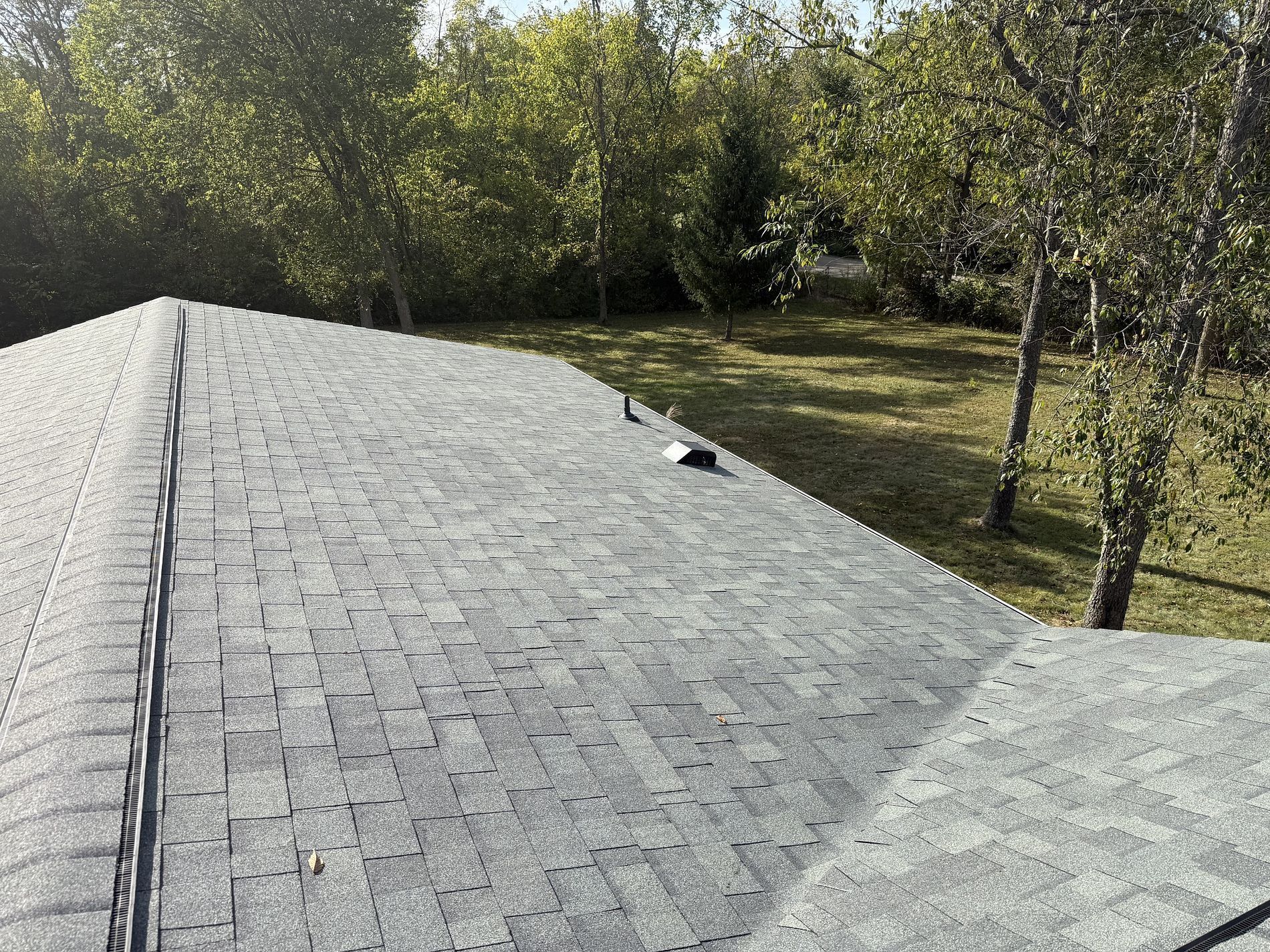
Your roof isn’t just a bunch of shingles nailed to wood - it’s the shield that protects your family, your home, and everything inside it. When it comes time for a roof replacement , you’ll quickly realize that not all shingles are created equal. In fact, choosing the right shingle can make the difference between a roof that barely holds up for 15 years and one that gives you decades of worry-free protection. The three most common options homeowners hear about are 3-tab shingles , architectural shingles , and Owens Corning’s Duration Flex shingles . Each offers unique advantages in terms of cost, appearance, and durability. Let’s break down the differences so you can feel confident about the decision you’re making for your home. What Are 3-Tab Shingles? If shingles had a “starter pack,” 3-tab shingles would be it. They’ve been around for decades and are often the most budget-friendly option. They’re called “3-tab” because each strip looks like three separate shingles once installed. Cost: The most affordable shingle option on the market. Lifespan: About 15–20 years, depending on weather and maintenance. Appearance: Flat, uniform look that gets the job done but doesn’t offer much style. Durability: Lightweight, which makes them more vulnerable to high winds, hail, and storm damage. Best fit: 3-tab shingles are ideal for homeowners on a tight budget, rental properties, or situations where you just need something practical without the frills. What Are Architectural Shingles? Now we’re moving into the “step-up” category. Architectural shingles (sometimes called dimensional shingles) are thicker, stronger, and designed with layers that create a more textured, upscale appearance. They’re by far the most popular option for homeowners upgrading their roofs today. Cost: A mid-range investment - more than 3-tab, but not luxury-level. Lifespan: 25–30+ years, which makes them a long-term solution. Appearance: A dimensional look that mimics wood shakes, adding instant curb appeal. Durability: Heavier weight and stronger adhesives help these shingles resist wind, storms, and general wear and tear. Best fit: Perfect for homeowners who want their home to stand out on the block, while still balancing cost and long-term protection. What Are Duration Flex Shingles? Think of Duration Flex shingles as the “luxury SUV” of the roofing world. Manufactured by Owens Corning, these shingles are built with a special polymer-modified asphalt that makes them incredibly flexible and impact-resistant. That means they can handle the kind of weather that destroys other roofs. Cost: A premium option - but you’re paying for unmatched protection. Lifespan: 30–40+ years when properly installed and maintained. Appearance: Similar to architectural shingles but with more refined, designer-level aesthetics. Durability: Class 4 impact rating (the highest available), which means they can stand up to hail, high winds, flying debris, and extreme temperature changes . Best fit: Duration Flex shingles are perfect for homeowners who live in storm-prone areas like Ohio (hail, tornadoes) or Florida (hurricanes). If you’re planning to stay in your home long-term, this is the roof that gives you the most peace of mind. Which Shingle Is Right for You? If you’re looking for the cheapest way to get a roof over your head, 3-tab shingles are your go-to. If you want a beautiful home upgrade that balances cost and quality, architectural shingles are the clear winner. If you want to protect your home against the worst storms nature can throw at you, Duration Flex is absolutely worth the investment. At the end of the day, the right choice depends on your budget, your style preferences, and how long you plan on living in your home. But no matter which way you go, choosing the right roofing contractor is just as important as choosing the right shingle. At Allstate Exteriors, we don’t just slap shingles on your house, we help homeowners across Ohio and Florida make informed decisions about protecting their biggest investment. As an Owens Corning Platinum Preferred Contractor , we have the training, experience, and warranties to make sure your roof lasts for decades. 👉 Schedule your free inspection today and let’s talk about the best roofing solution for your home, your budget, and your peace of mind.
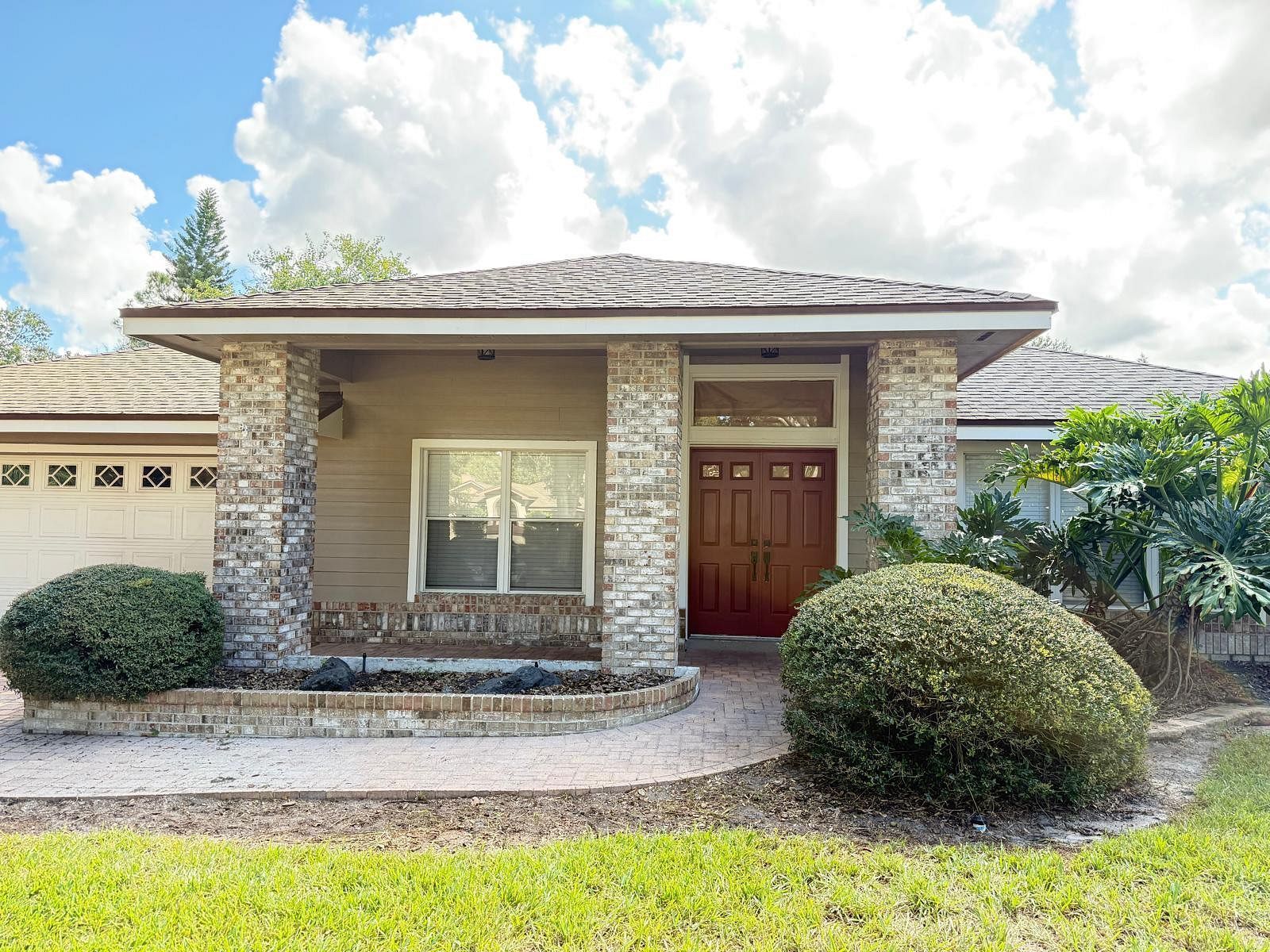
When a storm rolls through, it doesn’t just shake up your roof — it shakes up your peace of mind. Shingles in the yard, water stains on the ceiling, the constant drip-drip-drip reminding you something is wrong… it’s stressful. And right when you’re at your most vulnerable, here come the knock-knocks at the door. “Good news!” the out-of-town roofer says. “We can patch this up cheap, quick, and today!” It might sound like a lifeline, but here’s the truth: those so-called “ storm chasers ” are only here for one reason — to cash in and move on. The difference between a roofer who chases storms and a roofer who calls your town home isn’t just a matter of convenience. It’s the difference between a quick fix that falls apart and a roof that protects your family for the next decade and beyond. 🚨 The Short-Term Fix vs the Long-Term Solution Storm Chasers: Show up immediately after severe weather, often canvassing neighborhoods like salesmen. Offer too-good-to-be-true prices to pressure you into a fast decision. Use low-quality materials and subcontractors you’ll never meet again. Cut corners, then vanish before you even know something went wrong. Local Roofing Companies: Take time to thoroughly inspect and document storm damage. Understand local building codes and climate-specific needs. Use proven crews, trusted materials, and tested installation methods. Stick with you after the storm to ensure your home is truly secure. Think of it like this: would you rather have a stranger fix your car in a parking lot, or a mechanic you know and trust in a certified shop? The same logic applies to your roof. 🏡 The Warranty You Can Actually Use Storm Chasers: Throw around “warranty” promises that evaporate the second they leave town. If leaks start in six months? They won’t be around to answer your call. Your roof could end up disqualified from insurance or manufacturer coverage. Local Roofing Companies: Offer real warranties backed by the manufacturer (like Owens Corning). Provide workmanship guarantees you can actually hold them accountable to. Will be standing by years later when you need a repair, inspection, or just peace of mind. A warranty only matters if the company is still around to honor it. 💰 The Real Cost of “Cheap” Storm chasers love the phrase “we’ll save you money.” But here’s the reality: Cheap work = Expensive repairs later. Improper installation leads to hidden leaks, mold, rotting decking, and ruined insulation. Non-compliant work can void your insurance coverage. Local companies may not always be the “lowest bid,” but they give you: Transparent estimates, with no hidden surprises. Long-term savings because the job is done right the first time. Help navigating your insurance claim so you don’t leave money on the table. It’s not about the lowest price. It’s about the best value over 10+ years. 🤝 The Community Connection Here’s the thing about storm chasers: they don’t know your town. They don’t know your weather patterns. They don’t know your neighbors. They don’t care. But local roofers? They’re woven into the fabric of your community. Their kids go to the same schools. They sponsor the local 5K and Little League teams. You see their trucks and signs long after the storms pass. When you choose local, you’re not just buying a roof — you’re investing in a relationship. One that comes with accountability, reputation, and roots. ✅ The 10-Year Difference So, what happens 10 years down the road? If you hired a storm chaser : You might be on your second or third roof by now, with insurance headaches, hidden leaks, and repair bills stacking up. If you hired a local roofer : Your roof is still strong, your warranty still valid, and you have the same trusted company just a phone call away. The real difference between storm chasers and local roofers isn’t just about who fixes your roof today — it’s about who’s still here when you need them tomorrow. 📞 Ready for a Roof You Can Count On? At Allstate Exteriors, we’ve built our reputation one home, one roof, and one relationship at a time. We’re not chasing storms — we’re standing strong in our community, year after year. ✅ Platinum Preferred Contractor ✅ Real warranties backed by trusted manufacturers ✅ Decades of experience serving Ohio and Florida families ✅ Local, dependable crews you can trust
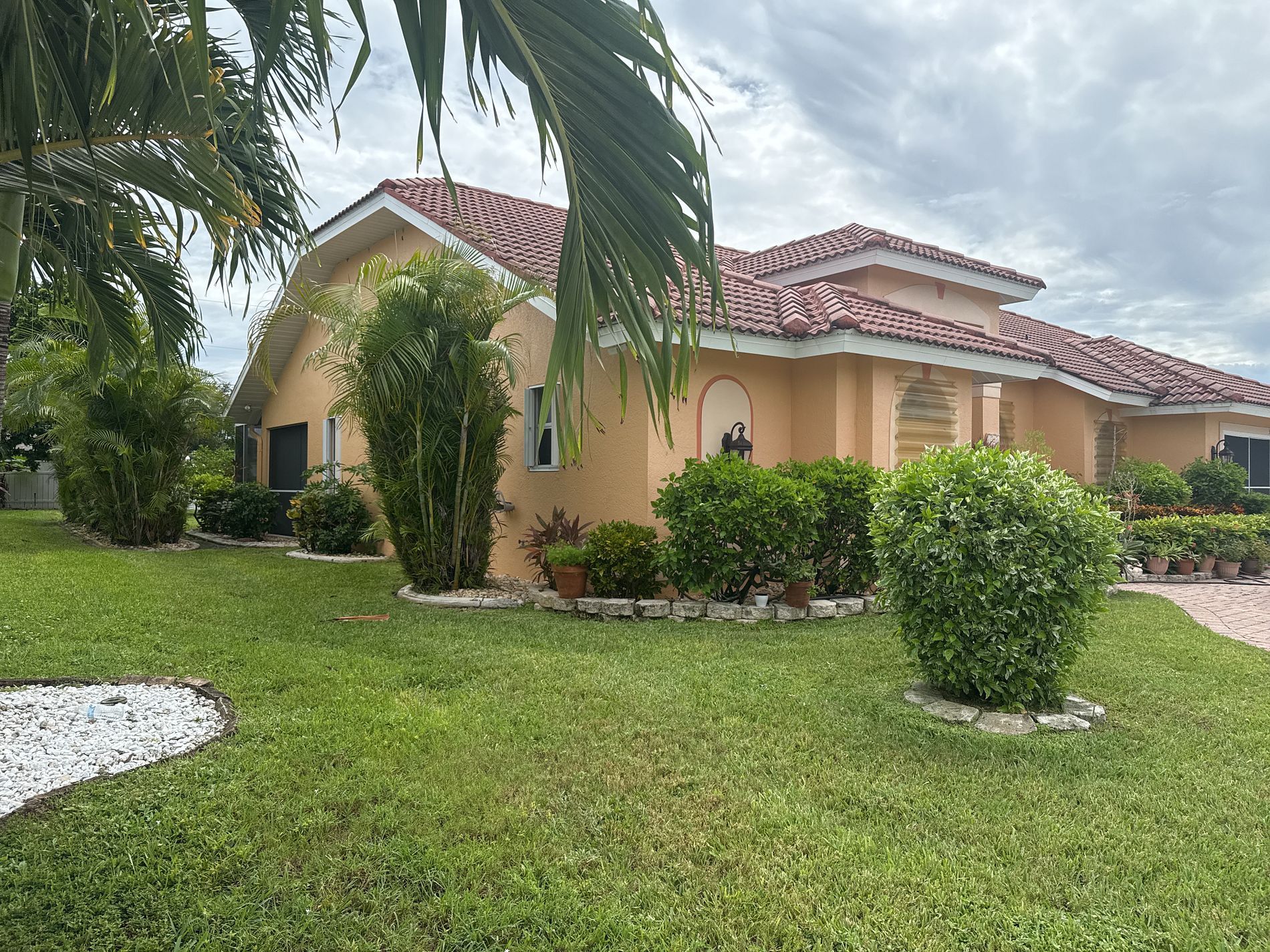
It’s easy to brush off a small roof leak. Maybe you noticed a faint water stain on the ceiling, a tiny drip during heavy rain, or some shingles that look out of place. You tell yourself, “It’s not that bad. I’ll deal with it later.” But here’s the truth: even the smallest roof leaks can snowball into major and expensive problems. At Allstate Exteriors, we’ve seen homeowners put off minor roof repairs only to face mold, rotten decking, and even structural damage down the road. If you’re wondering what really happens when you ignore a small roof leak, let’s break it down. 1. Water Damage Spreads Quickly Even a small leak allows water to creep into your attic, insulation, and drywall. Over time, that moisture soaks into wood, weakens materials, and spreads throughout your home. Rotting wood decking can compromise your roof’s structural integrity. Stained ceilings and walls lower your home’s curb appeal and value. Sagging drywall can lead to costly interior repairs. 2. Mold and Mildew Growth Where there’s moisture, mold is never far behind. A small leak creates the perfect environment for mold and mildew to grow inside your attic and walls. Mold spores can spread throughout your HVAC system. It can trigger allergies and respiratory issues for your family. Once mold sets in, remediation can cost thousands of dollars. 3. Higher Energy Bills A leaky roof doesn’t just let water in—it lets air out. Moisture damages insulation, making your home less energy-efficient. That means your AC or furnace has to work harder, and your utility bills creep up every month. Replacing insulation and fixing leaks later will cost far more than a simple repair today. 4. Structural Damage to Your Home If leaks continue unchecked, the consequences can be severe: Roof decking may collapse under pressure. Support beams can weaken, affecting your entire home’s stability. Water may even reach your foundation, causing cracks and shifting. What started as a “minor nuisance” could eventually compromise your home’s safety. 5. Shortened Roof Lifespan Your roof is designed to last 20–30 years or more, depending on the materials. But ignoring small leaks accelerates wear and tear. Moisture trapped beneath shingles or flashing will deteriorate roofing materials faster, often forcing homeowners into a full roof replacement years earlier than expected. 6. Insurance May Not Cover It Here’s a harsh reality: most insurance companies expect homeowners to handle routine maintenance. If you delay fixing a small roof leak, your insurance provider could deny your claim for damage, leaving you with the bill. Proactive repairs protect both your home and your wallet. How to Prevent Small Leaks From Becoming Big Problems At Allstate Exteriors, we recommend: Annual roof inspections to catch issues early. Storm damage checks after hurricanes, high winds, or hail. Prompt repairs for missing shingles, cracked flashing, or damaged gutters. Small roof leaks may not seem urgent, but the hidden damage they cause is real and often devastating. By acting quickly, you’ll protect your home, your family, and your investment. Call today to schedule your free estimate!

If you’ve ever gathered multiple roofing estimates, you’ve probably noticed something surprising: the numbers don’t always line up. One contractor might give you a low price, another comes in much higher, and the rest fall somewhere in between. So why do roofing estimates vary so much, and how can you make sure you’re comparing them fairly? At Allstate Exteriors & Restoration Services, we’ve been helping homeowners in Ohio and Florida replace and repair their roofs for decades. We know that your roof is one of the most important investments you’ll ever make for your home, and we believe you deserve clear, honest information when choosing a roofing contractor. Let’s break down the reasons estimates differ and what you should look for when reviewing them. 1. The Type and Quality of Roofing Materials One of the biggest factors in the price of a roof replacement is the type of roofing material. Not all shingles are created equal. For example: Three-tab shingles are typically the most affordable but also have the shortest lifespan. Architectural shingles cost more but are thicker, more durable, and add curb appeal. Impact-resistant shingles and premium options (like Owens Corning Duration FLEX) can provide enhanced protection against wind, hail, and severe weather. But it doesn’t stop at shingles. Quality underlayment, ice and water shield, flashing, vents, and even the type of nails used can all impact the total estimate. 👉 At Allstate Exteriors, we only use Owens Corning roofing products because they’re proven to withstand harsh weather while offering excellent warranties. Our detailed estimates include all the essentials so you’re not left with hidden costs down the road. 2. Labor Costs and Installation Standards Roofing isn’t just about materials - it’s about the people installing them. A roof can only perform as well as it’s installed. Contractors who invest in training, safety certifications, and skilled crews may charge more for labor, but the quality of the installation will save you money in the long run. Crews that are underpaid or rushed may cut corners, leading to leaks and premature roof failure. Certified roofing contractors follow strict manufacturer guidelines, ensuring your roof lasts as long as possible. 👉 As an Owens Corning Platinum Preferred Contractor, Allstate Exteriors is held to the highest installation standards in the industry. That means your roof is installed correctly the first time—giving you peace of mind for years to come. 3. Warranty Coverage Another reason roofing estimates vary is the type of warranty offered. Some companies only provide a basic one- or two-year workmanship guarantee. Others, especially certified contractors, can offer extended manufacturer-backed warranties that cover both materials and labor. 👉 Because of our Platinum Preferred status, Allstate Exteriors can offer extended Owens Corning warranties that most local contractors simply cannot. Pair that with our workmanship guarantee, and you’re covered from every angle. 4. The Scope of Work Not all estimates include the same level of detail. Some roofing contractors may only quote for shingle replacement, while others include additional work like: Replacing rotten decking Upgrading ventilation Installing new flashing around chimneys and skylights Removing and disposing of old materials 👉 At Allstate Exteriors, we provide clear, transparent estimates with line-by-line breakdowns, so you know exactly what’s included and what’s not. 5. Transparency and Reputation Sometimes the lowest bid isn’t really the best deal. Low-ball estimates may not include proper insurance, quality products, or experienced installers and that can cost you more in repairs later. When comparing estimates, always look beyond the price: Is the contractor licensed and insured? Do they have a proven reputation with 5-star reviews? Are they local and established, or could they disappear when you need warranty service? 👉 With thousands of satisfied customers, an A+ rating with the BBB, and countless 5-star reviews, Allstate Exteriors has built a reputation for doing things the right way. We’re a family-owned company that’s here to stay. How to Compare Roofing Estimates Fairly When you’re reviewing multiple bids, keep these steps in mind: Compare apples to apples. Make sure each estimate includes the same quality materials and scope of work. Ask questions. If something isn’t clear, ask the contractor to explain it. A good roofing company will be transparent. Consider long-term value. The cheapest roof may not last as long or provide the same level of protection as one installed by a certified contractor with premium materials. Frequently Asked Questions: Why is one roofing estimate so much lower than the others? It’s often because cheaper materials, limited warranties, or less experienced crews are being used. Always read the fine print. Should I always pick the lowest roofing estimate? Not necessarily. The lowest price may cost you more in repairs and replacements later. Look at the overall value, not just the number. How can I be sure my roofing estimate is fair? Work with a trusted, local roofing company with a solid reputation, certifications, and detailed proposals. At Allstate Exteriors, we believe homeowners deserve more than a number on a piece of paper. You deserve clarity, honesty, and peace of mind. That’s why we take the time to explain our estimates, show you exactly what’s included, and stand behind our work long after the project is complete. Contact Allstate Exteriors today to schedule your free estimate!
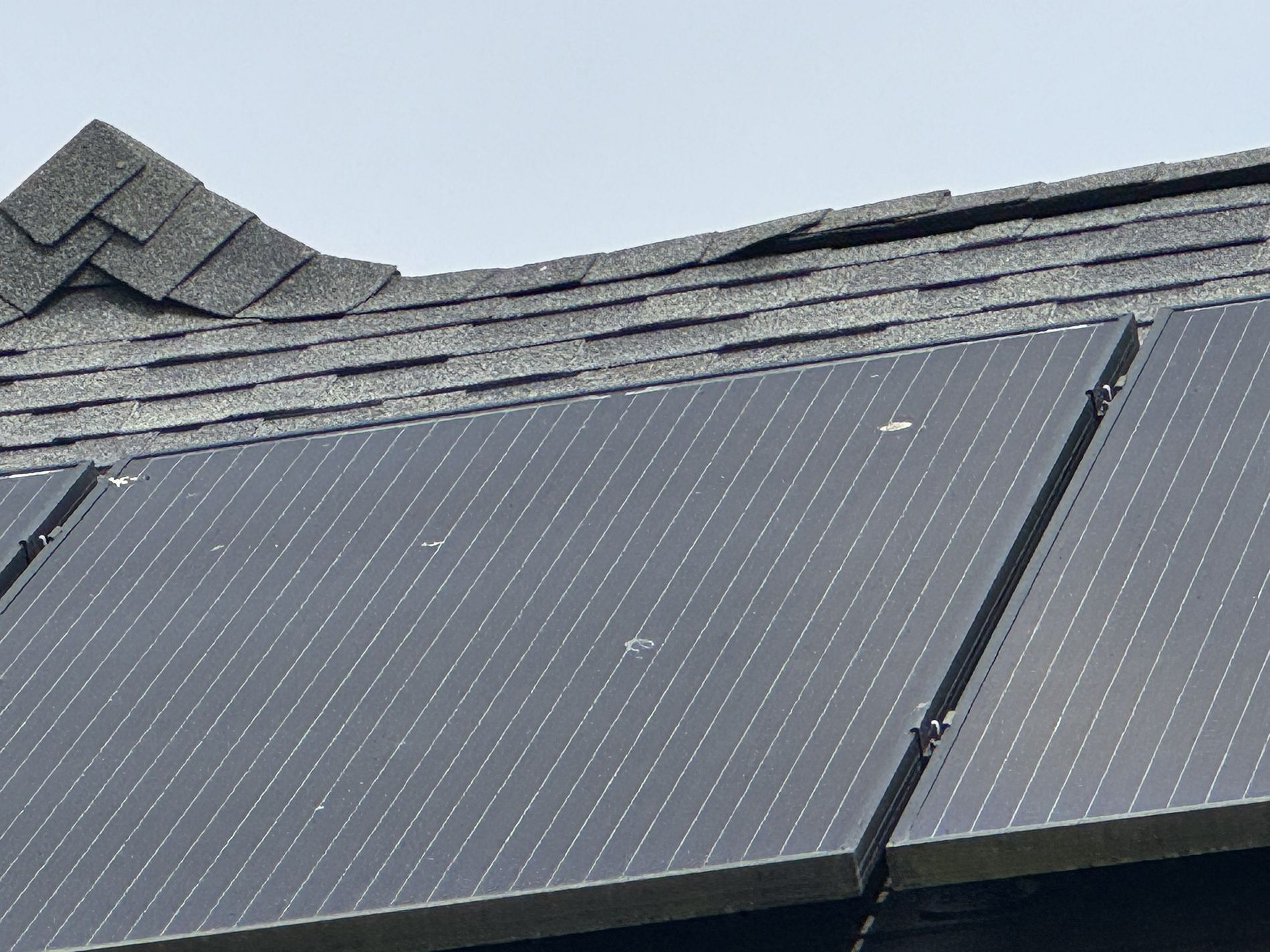
A strong storm can be unsettling. You hear the howling wind outside, watch the trees sway, and wonder if your home will hold up against Mother Nature’s power. Once the storm passes, most homeowners do the same thing: step outside, glance up at the roof, and breathe a sigh of relief when everything looks okay. But here’s the truth: what you see from the ground is only part of the story. Wind damage to your roof isn’t always obvious, and waiting until you spot a problem could mean costly repairs later. At Allstate Exteriors, we’ve inspected countless roofs in Ohio and Florida, and one of the most common phrases we hear is: “I thought my roof was fine—I didn’t see anything wrong!” Hidden wind damage is sneaky, but left unchecked, it can compromise your roof’s integrity and your home’s safety. How Wind Quietly Damages Your Roof When people picture wind damage, they usually imagine shingles flying off in big, dramatic chunks. While that can happen, wind often leaves behind subtle, invisible damage that isn’t easy to notice: Shingle Lifting – Even if shingles don’t blow off, strong gusts can loosen the adhesive seal. A lifted shingle might lay flat again, but the waterproof barrier is already broken. Granule Loss – The gritty texture on shingles protects your roof from sun and water. Wind rubs shingles against each other, knocking those protective granules loose—kind of like sandpaper wearing them down. Nail Stress – Wind pressure tugs on fasteners. Over time, it can weaken nails or pull them up slightly, creating hidden entry points for water. Moisture Intrusion – Once water finds even a hairline gap, it can seep into your roof’s underlayment and decking, quietly causing rot, mold, and stains that may not show up indoors for months. Why You Might Not Notice Damage Right Away Wind damage has a way of disguising itself. Here’s why so many homeowners overlook it: From the Ground, Everything Looks Fine – Unless shingles are curled, cracked, or missing, the roof might look completely intact. Symptoms Are Delayed – A roof leak doesn’t always happen the day after a storm. It might take weeks—or even a season—for damage to reveal itself inside. Rooflines Are Hard to See – On steep or tall roofs, the compromised areas are often out of sight. Think of it like a tiny crack in your car’s windshield—it may not seem like a big deal at first, but if left alone, it will spread and become a much bigger problem. The Cost of Ignoring Hidden Wind Damage Overlooking invisible damage can lead to much bigger headaches, such as: Costly Repairs Later – What could’ve been a quick repair may turn into replacing large sections of your roof. Insurance Claim Issues – Insurance companies may deny coverage if too much time passes before damage is documented. Interior Problems – Ceiling stains, peeling paint, mold, and insulation damage often trace back to wind-damaged shingles that looked “fine.” S hortened Roof Lifespan – A compromised roof simply won’t last as long, which means you’ll be replacing it sooner than expected. What Homeowners Should Do After a Windstorm You don’t need to climb up on your roof to check it yourself—in fact, it can be dangerous. Instead, follow these steps to protect your home: Schedule a Professional Roof Inspection – A certified roofing expert knows exactly what to look for and can spot issues the average homeowner would never notice. Keep Records – Write down the date of the storm, snap photos of your yard or siding if anything blew off, and save any news reports of wind speeds in your area. This helps if you ever need to file an insurance claim. Don’t Wait – Even if everything looks okay, time is critical. Acting quickly means repairs are easier, cheaper, and more likely to be covered by insurance. Protecting Your Home Starts with the Roof Your roof is your home’s first line of defense against the elements. It protects your family, your belongings, and the structure of your house itself. That’s why it’s so important not to trust a “quick glance” after a storm. At Allstate Exteriors, our trained professionals know how to spot wind damage that isn’t visible to the untrained eye. We’ll give you an honest assessment of your roof’s condition and recommend the best next steps - whether that’s a simple repair , maintenance, or a replacement. Call Allstate Exteriors today to schedule your free inspection.
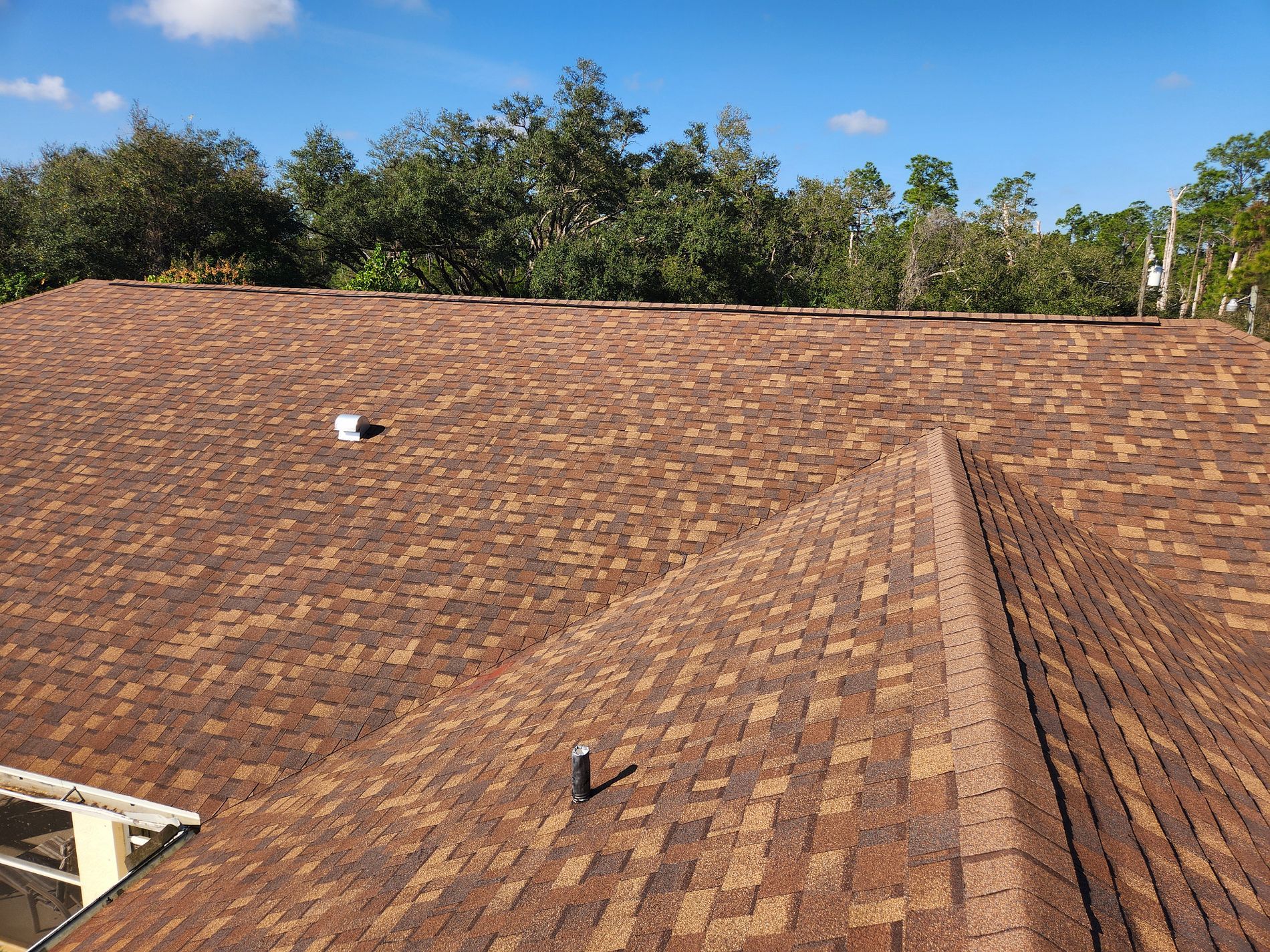
When hurricanes or tropical storms move through Florida, the damage they leave behind can be overwhelming. Roofs often take the hardest hit—leaving families vulnerable to leaks, water intrusion, and unsafe living conditions. Thankfully, federal programs like FEMA’s Temporary Roofing Assistance can help bridge the gap between disaster and recovery. At Allstate Exteriors, we’ve worked with countless homeowners who needed immediate protection after a storm while planning their permanent roof repairs. Here’s what you should know about FEMA’s roofing assistance and how our team can help you through the process. What Is FEMA’s Roofing Assistance? FEMA (Federal Emergency Management Agency) provides temporary roofing assistance after a federally declared disaster. The most well-known program is the Blue Roof Program, which installs durable, weather-resistant coverings to shield damaged roofs from the elements. It’s important to note that FEMA’s program is a short-term solution—its goal is to make homes safe and habitable until a permanent repair or replacement can be completed by a trusted roofing company. Who Qualifies? To be eligible, you typically must: Live in a federally declared disaster area Have roof damage that makes your primary residence unsafe or unlivable Provide documentation of ownership and residency FEMA may send an inspector to confirm the extent of damage before approving assistance. What It Covers (and Doesn’t) ✅ Temporary coverings or limited repairs to protect against further water intrusion ✅ Materials and labor provided through authorized contractors ❌ Full roof replacements ❌ Cosmetic upgrades or non-essential improvements ❌ Detached structures (sheds, garages, etc.) Insurance vs. FEMA Assistance Many Florida homeowners wonder if they should contact FEMA or their insurance company first. The answer: always start with your insurance provider. FEMA is meant to step in when insurance coverage doesn’t cover immediate needs. At Allstate Exteriors, we help homeowners every day with insurance claims, inspections, and repairs to ensure they get the coverage and long-term solutions they deserve. How Allstate Exteriors Fits In While FEMA may cover temporary protection, our team steps in to deliver the permanent, high-quality repairs or replacements your home needs. As an Owens Corning Platinum Preferred Contractor with an A+ BBB rating, we’re trusted across Florida to: Perform detailed storm damage inspections (with photo and video documentation) Work directly with homeowners through the insurance process Install durable roofing systems built to withstand Florida’s climate We know that after a storm, homeowners need more than just a tarp—they need peace of mind. That’s why our crews are on call and ready to respond quickly when disaster strikes. Final Thoughts FEMA roofing assistance can provide valuable short-term relief, but it’s only part of the recovery process. Once your home is safe, turn to a trusted local contractor like Allstate Exteriors for the permanent repairs that protect your family long-term. Whether you’re dealing with minor damage or a full roof replacement, our Florida teams are here to help you every step of the way. 👉 Need a roof inspection after a storm? Contact Allstate Exteriors today for your free storm damage assessment.

